Bardiya National Tiger Trip – Into the Jungle, Far From the Crowd
Tucked away in Nepal’s quiet far-west, Bardiya isn’t just another national park — it’s where you go when you actually want to feel the jungle. This trip is all about real wilderness: tracking tiger footprints in the dust, floating past crocs in a wooden canoe, and hearing nothing but rustling leaves and distant birdcalls. Over a few slow-paced days, you’ll step off the grid and into raw nature — think morning safaris, lazy riverside walks, and local Tharu village vibes. No busy crowds here, just you, the forest, and maybe a Bengal tiger if you’re lucky. It’s not a zoo. It’s the wild — and it’s waiting.
The Bardiya experience doesn’t come with snowy peaks or high altitudes — it hits you differently. It’s humid air, tall elephant grass brushing your arms, and trails that snake through sal forests alive with sound. You’re not climbing mountains here — you’re walking on wild soil where every step might lead to a tiger sighting or a wild elephant crossing. Canoeing down the Karnali River, you’ll drift past gharials sunbathing on the banks. The vibe? Earthy, tense in the best way, full of wonder. It’s not the Everest trail — it’s flat, hot, and full of life that watches you from the shadows.
"Bardiya National Park Travel Guide: The Unfiltered, Unapologetic Truth"
Okay, let’s get one thing straight—Bardiya isn’t some zoo where tigers pose for your Nikon. This is proper jungle. The kind where the air sticks to your skin like hot soup, where the grass is taller than your ego, and where the crocs look at you like you’re the intruder (because, newsflash, you are).
Most tourists flock to Chitwan because it’s easy. Bardiya? Nah. Getting here is half the battle—bone-rattling buses, dusty roads, and the occasional rogue buffalo blocking traffic. But that’s the point. The harder it is to reach, the fewer selfie sticks you’ll see.
The Good Stuff (Because You’re Here for the Wild, Right?)
Tigers? Maybe. You won’t get a guarantee, but that’s the thrill. The jungle goes dead silent, monkeys lose their minds, and your guide freezes mid-step. That’s when you know—something’s watching. (Pro tip: Skip the neon shirts. Tigers aren’t fans of fashion victims.)
Rhinos That Don't Care. In Chitwan, rhinos are basically Instagram models. Here? They’re moody, mud-caked tanks that’ll stare you down like you owe them money. Best view? Early morning by the river, when they’re too busy wallowing to care about you.
Dolphins. Yes, Dolphins. The Karnali River has Gangetic dolphins—weird, pinkish, and absurdly rare. Spot one, and you’ve officially used up your luck for the year.
The Birds. Oh God, the Birds. If you’re into birding, Bardiya will ruin all other jungles for you. Kingfishers flash like blue lightning, hornbills sound like creaky doors, and peacocks? They’re basically the drama queens of the forest.
The Real Talk (Because Someone’s Gotta Say It)
"Luxury Safari" is a Lie. You’re sleeping in basic lodges where geckos gossip on the ceiling and the fan may or may not work. But hey, the daal bhat is legit, and the locals? Some of the warmest people you’ll meet. The Heat Will Break You. December’s bearable. April? You’ll sweat in places you didn’t know could sweat. Hydrate or die. Skip the Elephant Rides. Just don’t. If you need an ethical explanation, you’re in the wrong place.
Why This Jungle Wins
Bardiya doesn’t care about your bucket list. It doesn’t do staged encounters or guaranteed sightings. What it does do? Raw, unfiltered wildness. The kind where you walk out covered in dust, bug bites, and a story that doesn’t sound real.
Still want that picture-perfect safari? Go to Chitwan. But if you’re after the real deal—where every rustle in the grass could be a deer or a predator—Bardiya’s waiting. And it doesn’t do refunds.
Final Pro Tip: Pack light, but bring extra batteries. Because when that tiger does show up (and it might), you’ll want your camera ready. Or maybe you won’t. Some moments are just for you.
Bardiya National Park Safari Route: The Real Jungle Itinerary
Let’s cut to the chase—this isn’t one of those "luxury wildlife tours" where you’re herded around in a jeep with 20 other tourists. Bardiya’s route is raw, remote, and rewards those who ditch the crowds. Here’s the full scoop on where you’ll go, what you’ll suffer through (kidding… mostly), and why this route slaps harder than Chitwan’s overdone safaris.
Kathmandu → Nepalgunj → Bardiya: The Gateway to Wild
You’ll start in Kathmandu (obviously), but the real adventure kicks off with a flight to Nepalgunj—a chaotic, dusty pitstop that’s basically the universe saying, "You sure you wanna do this?" From there, it’s a 2-hour drive into the Terai’s backroads, where the air gets thicker, the roads get questionable, and the vibe shifts from "tourist" to "adventurer." Welcome to Bardiya’s gateway: Thakurdwara. This tiny town is your basecamp, where teahouses serve daal bhat with extra heart and the jungle whispers "come find me."
The Safari Routes: Where the Wild Things Actually Roam
- Bardiya’s core zone isn’t some manicured park—it’s 968 sq km of sal forests, elephant grass, and riverbanks ruled by crocs. Key spots you’ll hit:
- Geruwa River: Crocodile central, with dolphins playing hide-and-seek in the currents. Sunrise here? Unreal.
- Sal Forest Trails: Tiger tracking on foot (yes, on foot—no jeep safaris here). Guides read pugmarks like GPS.
- Phanta Grasslands: Rhino heaven. These moody tanks love this open stretch, especially at golden hour.
- Karnali Riverbanks: Where otters, elephants, and maybe a lurking leopard all share one waterhole.
Altitude? Nah. Humidity? Oh Hell Yes.
Unlike Nepal’s mountain treks, Bardiya sits at a steamy 150-300m—so no altitude headaches, just sweat-drenched shirts and the occasional "why did I wear jeans?" regret. Walking durations vary (3-6 hours daily), but it’s not about distance—it’s about patience. Tigers don’t run on Instagram time.
Cultural Pitstop: The Tharu Vibe
Between safaris, you’ll crash in Thakurdwara, a Tharu-majority village where hospitality means "eat this entire plate of spicy goat curry or offend my ancestors." Tharu homestays and their psychedelic wall murals are a mood. Pro tip: Try their raksi (local moonshine), but maybe after the jungle trek.
Exit Strategy: Nepalgunj → Kathmandu → Reality Check
After 3 days of jungle madness, you’ll drag your bug-bitten self back to Nepalgunj (flight delays highly likely—this is Nepal, after all) and finally to Kathmandu. You’ll return with:
- Zero guarantee of tiger photos (but stories better than those who got them).
- A newfound respect for humidity.
- The urge to tell everyone “Chitwan’s for beginners.”
Bardiya National Park: The Highlights That Make This Jungle Worth the Sweat
Let’s be real—most safari packages promise you “unforgettable wildlife encounters” and deliver a zoo-like experience with 20 other jeeps circling a bored rhino. Bardiya doesn’t play that game. This is Nepal’s wildest, least-explored jungle, where the animals outnumber the tourists and the only thing predictable is the humidity. Here’s what makes this trip actually worth ditching the comfort of your couch:
- Tiger Tracking on Foot (No Jeep Safaris Here)
Walk with expert trackers through Sal forests and elephant grass, where tiger pugmarks tell the real story. - Geruwa River Crocodile Sunbathing Sessions
Dozens of massive gharials and muggers lining the banks like grumpy old men at a park. - Gangetic Dolphins – Yes, Dolphins – in the Karnali River
Spot the rare, pinkish dolphins that prove nature has a sense of humor. - Rhino Encounters in Phanta Grasslands
One-ton prehistoric tanks grazing at sunset. No fences. No guarantees. Just raw wildness. - Birdwatching That’ll Ruin All Other Jungles For You
From neon kingfishers to screaming hornbills—this is Asia’s best-kept birding secret. - Tharu Village Homestays (With Extra Spice & Raksi)
Sleep in mud-walled homes, eat fire-breathing goat curry, and drink local moonshine with the Tharu people. - Jungle Night Walks (For the Brave Only)
Flashlight beams catching glowing eyes in the dark. Could be a deer. Could be… something else. - Elephant Herds Crossing Like They Own the Place
Watch 20+ wild elephants bulldoze through the forest like a living earthquake. - The “Tiger Effect” – When the Jungle Goes Silent
Birds stop singing. Monkeys scream. Your guide freezes. That’s how you know it’s nearby. - Zero Crowds, Zero Jeep Traffic Jams
Unlike Chitwan, you’ll have 90% of sightings to yourself. No influencers hogging the view. - Sunrise Over the Karnali River (Camera Required)
Mist, crocodiles, and maybe a tiger drinking—all painted in gold light. - The “I Survived Bardiya” Bragging Rights
Because let’s be honest—you’re doing this partly to humble-brag later.
Why These Highlights Matter
This isn’t a checklist safari. It’s a choose-your-own-adventure where the jungle decides what you see. No guarantees—just the thrill of the unknown. Still too tame? Good news: The leeches, 90% humidity, and potential tiger stares will keep things spicy.
Bardiya National Park: The Brutally Honest Season Guide
Listen up—timing is everything in Bardiya. Show up when the jungle’s sweating like a monsoon sauna, and you’ll regret every life choice. Come when the animals are out playing? Pure magic. Here’s the real breakdown of when to go, what to expect, and why you definitely don’t want to mess this up.
Prime Time: Dry Season (February – April)
Why It’s Gold:
- Animals On Parade: Waterholes dry up, forcing tigers, rhinos, and elephants into the open. Your chances of spotting them? Sky-high.
- Weather You Can Survive: Days hover around 25-30°C (hot but not hellish), nights dip to 15°C. Perfect for morning safaris without heatstroke.
- Crisp Visibility: Dust-free air + golden light = those NatGeo-worthy sunrise shots over the Karnali River.
Pro Tip: March-April is the sweet spot—peak wildlife action before the scorching May inferno hits.
Shoulder Season: Early Winter (November – January)
For the Sweat-Haters:
- Pleasant-ish Days: 20-25°C, chilly mornings (pack a light jacket). Great for hiking without drowning in your own sweat.
- Fewer Tourists: Post-monsoon freshness without the crowds. Downsides? Grass is taller (harder for spotting wildlife).
- Wildlife Still Active: Tigers don’t hibernate, but they’re stealthier in lush greenery.
Watch Out For:
- Foggy mornings can delay river safaris. Bring patience.
Monsoon Season (June – September): Only for Masochists
The Hard Truth:
- Jungle Gone Wild: Lush greenery, full rivers… and trails turned to sludge.
- Wildlife? Somewhere. Animals scatter with abundant water. Tigers? Good luck.
- Unbearable Humidity: 90%+, with mosquitoes plotting your demise.
Who Should Go:
- Hardcore birders (migratory species arrive) or photographers who love moody, misty shots.
Post-Monsoon (October): The Wildcard
Hit or Miss:
- Lush & Vibrant: Jungle’s freshly washed, rivers are roaring.
- Leech Fest: Post-rain means these little vampires throw a welcome party. Gaiters = non-negotiable.
- Improving Visibility: By late October, trails dry up, and animals return to usual hangouts.
The Worst Time? Late May – Early June
Just… Don’t.
- 45°C in the shade. Even the rhinos are hiding.
- Dust storms + parched landscapes. Photography? Hah.
Final Verdict:
- For Wildlife Fanatics: Feb-April (dry, action-packed).
- For Comfort Chasers: Nov-Jan (cooler, but work harder for sightings).
- For Gluttons for Punishment: Monsoon (we warned you).
Still unsure? February. Trust us. The jungle’s waiting—and it doesn’t do reruns.
Bardiya National Park Food & Lodging: No Frills, All Flavor (Survival Guide Included)
Let’s get one thing straight—you’re not here for thread-count sheets or avocado toast. Bardiya’s food and lodging scene is wild in every sense: think spicy curries that’ll clear your sinuses, beds that’ve hosted more adventurers than a hostel in Kathmandu, and the kind of rustic charm that separates tourists from travelers. Here’s the unfiltered lowdown.
Where You’ll Crash: Lodges That Define “Jungle Chic”
Thakurdwara Basecamp Vibes:
- Teahouses & Homestays: Basic but bursting with character. Expect:
- Ceiling Fans > AC (power cuts are part of the adventure).
- Bare-Bones Rooms: Twin beds, mosquito nets, and walls painted with Tharu tribal art.
- Shared Bathrooms (sometimes with surprise cold showers—refreshing after a sweaty safari).
- "Luxury" Option? A few newer lodges offer private bathrooms… but let’s be real, you’re here for the jungle, not a spa retreat.
Pro Tip:Pack a sleep sack if you’re squeamish. This ain’t the Marriott.
What You’ll Eat: Carb-Loading, Jungle-Style
The Menu (No Avocado in Sight):
- Daal Bhat Power Hour
- The OG trekker fuel: rice, lentil soup, veg curry, and unlimited refills (because safari legs need carbs).
- Local Twist: Tharu-style daal bhat hits different—think wild greens, smoked fish, and a side of attitude.
- Momos That’ll Ruine Kathmandu’s For You
- Steamed, fried, or dunked in spicy achar—these dumplings are the real jungle royalty.
- Steamed, fried, or dunked in spicy achar—these dumplings are the real jungle royalty.
- Jungle BBQ (Sometimes Literally)
- Fresh river fish, spicy chicken, or goat so tender it’ll make you question city meat forever.
- Fresh river fish, spicy chicken, or goat so tender it’ll make you question city meat forever.
- The Breakfast of (Safari) Champions
- Gurung bread (thick, fried, glorious), omelets, and chia (Nepali tea) strong enough to wake a hibernating rhino.
Hygiene Level:
Street-Smart Rules: Stick to hot, freshly cooked food. Avoid sketchy buffets. Your stomach will thank you.
Booze & Brews: Liquid Courage for Safari Stories
- Raksi: Local moonshine that could fuel a jeep. Sip slowly unless you want tomorrow’s tiger tracking to feel like an exorcism.
- Nepali Beer: Ice-cold (when the fridge works) and best enjoyed with sunset river views.
Pro Tip:Hydrate first. Jungle heat + alcohol = next-level regret.
The Hard Truths (No One Tells You)
- WiFi?
- Some lodges claim to have it. They lie. Embrace the digital detox.
- Some lodges claim to have it. They lie. Embrace the digital detox.
- Vegans/Gluten-Free?
- You’ll survive… barely. Pack snacks or learn to love daal.
- You’ll survive… barely. Pack snacks or learn to love daal.
- Water = Bottled Only
- Even brushing your teeth. Montezuma’s revenge has a Nepali cousin.
Final Verdict:
- Food: Hearty, spicy, and unapologetically local.
- Lodging: Clean but basic—like camping with walls.
- Vibe: “If you wanted room service, you picked the wrong jungle.”
Still hungry? Good. The jungle feasts—and the stories—are worth every bite.
Bardiya National Park Permits & Rules: Cut Through the Bureaucratic Jungle
Let’s be real—permits are the least sexy part of any adventure, but screw this up and you’ll be stuck arguing with Nepali officials instead of tracking tigers. Here’s the no-bullshit guide to Bardiya’s paperwork, so you can focus on what actually matters: rhinos, not red tape.
Bardiya National Park Entry Permit
- What It Is: Your golden ticket into Nepal’s wildest jungle.
- Cost: Foreigners: NPR 2,000 per day (≈ $15 USD)
- SAARC Nationals: NPR 1,000 per day
- Where to Get It: Kathmandu: Nepal Tourism Board office (bring passport + cash)
- On Arrival: Thakurdwara Park Entrance (but save time—get it in advance)
Pro Tip: Need multiple days? Buy all at once. No one wants to queue daily.
TIMS Card (Not Always Required—But Check!)
The Confusion: Some agents insist you need it; others say Bardiya doesn’t care. Truth? Officially, not required for Bardiya, but if your trek includes other regions (e.g., connecting to Chitwan), you might.
- Cost:Independent Trekkers: NPR 2,000
- With Guide: NPR 1,000
- Where: Nepal Tourism Board, Kathmandu or Pokhara.
Local Community Fee (The "Unofficial" One)
The Deal: Some Tharu villages charge NPR 500-1,000 for "cultural preservation." It’s legit—just pay it and move on.
Rules That’ll Save Your
- Guide Mandatory for Jungle Walks: No solo trekking in the core zone. Rangers will turn you back.
- Stay on Designated Trails: Stray off-path, and you might become tiger bait (or just piss off the park staff).
- No Drones Without Permission: Want aerial shots? Apply weeks ahead or risk confiscation.
- Alcohol Ban in Core Zones: Save the raksi for Thakurdwara. Drunk + jungle = bad decisions.
The Fine Print (That No One Reads But Should)
- Permit Validity: Park entry is per day. Overstay? Pay double at exit.
- Cash Only: Cards are mythical creatures here. Bring NPR (USD works in Kathmandu).
- Photography Fees: Fancy camera? Extra NPR 500/day. Phone snaps = free.
Pro Hacks for Smooth Sailing
- Photocopy Everything: Passport, permits, your soul. Rangers love paperwork.
- Permit + Guide = Package Deal: Most tour operators handle permits for you. Worth the markup.
- Monsoon Loophole: Fees drop slightly June-Sept (but see Prompt 6 re: monsoon regrets).
Final Warning:
Permits are like jungle predators—ignore them, and they’ll bite you. Sort it early, then get back to dreaming about tiger sightings.
Why You Need to Experience Bardiya National Park - Nepal's Last True Wilderness
Let's cut through the Instagram-filtered safari fantasies - Bardiya is where real adventure happens. This isn't some manicured wildlife park where animals perform on schedule. It's 968 square kilometers of untamed jungle where the rhythm of nature sets the pace, and you're just a guest in the wild's domain.
What makes Bardiya special? First, the raw authenticity. While other parks feel like open-air zoos, here you'll track tigers on foot through sal forests so dense the sunlight barely reaches the ground. Your guide will point out fresh pugmarks as your pulse quickens, knowing the world's most majestic predator could be watching you right now. The Geruwa River becomes a stage for nature's drama at dawn - crocodiles basking like ancient statues while rare Gangetic dolphins breach the surface in playful arcs.
The wildlife encounters here feel earned, not engineered. You'll wait patiently in hides as rhinos emerge from the tall grass, their armored hides caked in mud. Elephants appear without warning, moving through the trees with surprising quietness for their size. Over 400 bird species provide a constant soundtrack, from the haunting calls of hornbills to the splash of kingfishers diving for breakfast.
But Bardiya offers more than just animals. The Tharu people add rich cultural depth to your journey. Their vibrant murals decorate village homes where you'll share fiery curries and local raksi moonshine. These indigenous communities have lived alongside tigers for generations, and their stories will change how you see the jungle.
This is adventure travel at its purest - no guarantees, no hand-holding, just the thrilling uncertainty of what each game drive might reveal. The park's remote location in western Nepal means you'll share sightings with more wildlife than tourists. When you finally spot that tiger padding silently through golden grass, or witness a rhino calf learning to navigate its world, you'll understand why Bardiya remains Nepal's most authentic wildlife experience.
Come for the tigers, stay for the transformation that only true wilderness can provide. Just remember - in Bardiya, you're not the spectator. You're part of the ecosystem. And that changes everything.
Conclusion
Bardiya National Park offers a truly unforgettable experience, blending exciting wildlife safaris with adventure activities, cultural immersion, and community-based tourism. Whether you’re a seasoned wildlife enthusiast or simply seeking a peaceful escape in nature, Bardiya has something special for everyone. Book your adventure today and explore this hidden gem of Nepal!
Looking for a classic safari adventure? Discover rhinos, elephants, and other wildlife in Nepal’s top reserve with our Chitwan National Park Jungle Safari , perfect for those new to wildlife exploration.
🧭 Alternative Tours & Packages
- Koshi Tappu Wildlife Reserve Trip
A haven for bird lovers and wetland wildlife enthusiasts, this lesser-known reserve in eastern Nepal offers peaceful nature walks, boat rides, and the chance to spot rare species like the wild water buffalo and migratory birds.
- Nepal’s Luxury Adventure – Trek, Safari & Rafting
A premium multi-experience tour that combines soft trekking, thrilling white-water rafting, and wildlife safaris. Designed for those who seek adventure with added comfort and style across Nepal’s diverse landscapes.
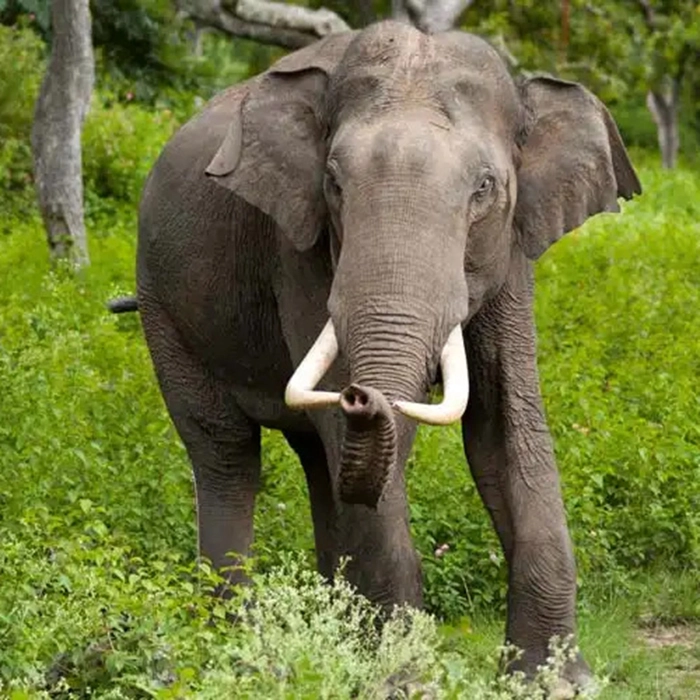


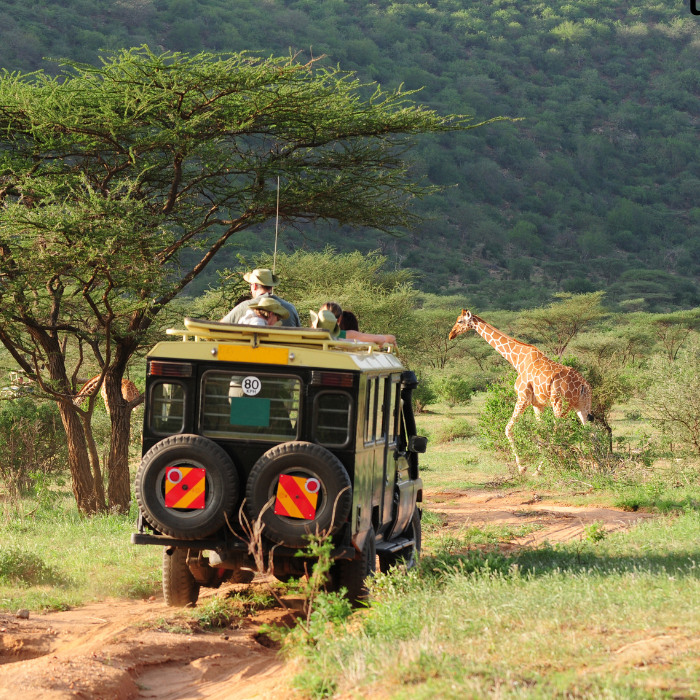
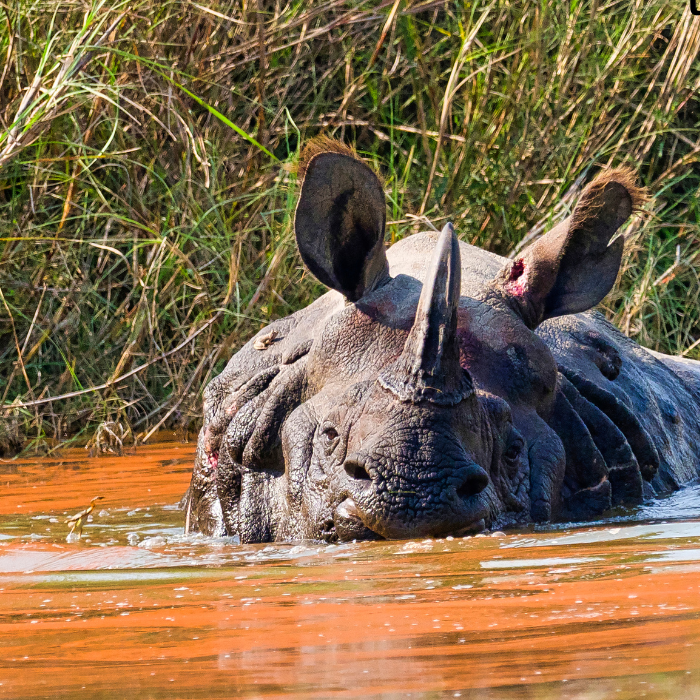


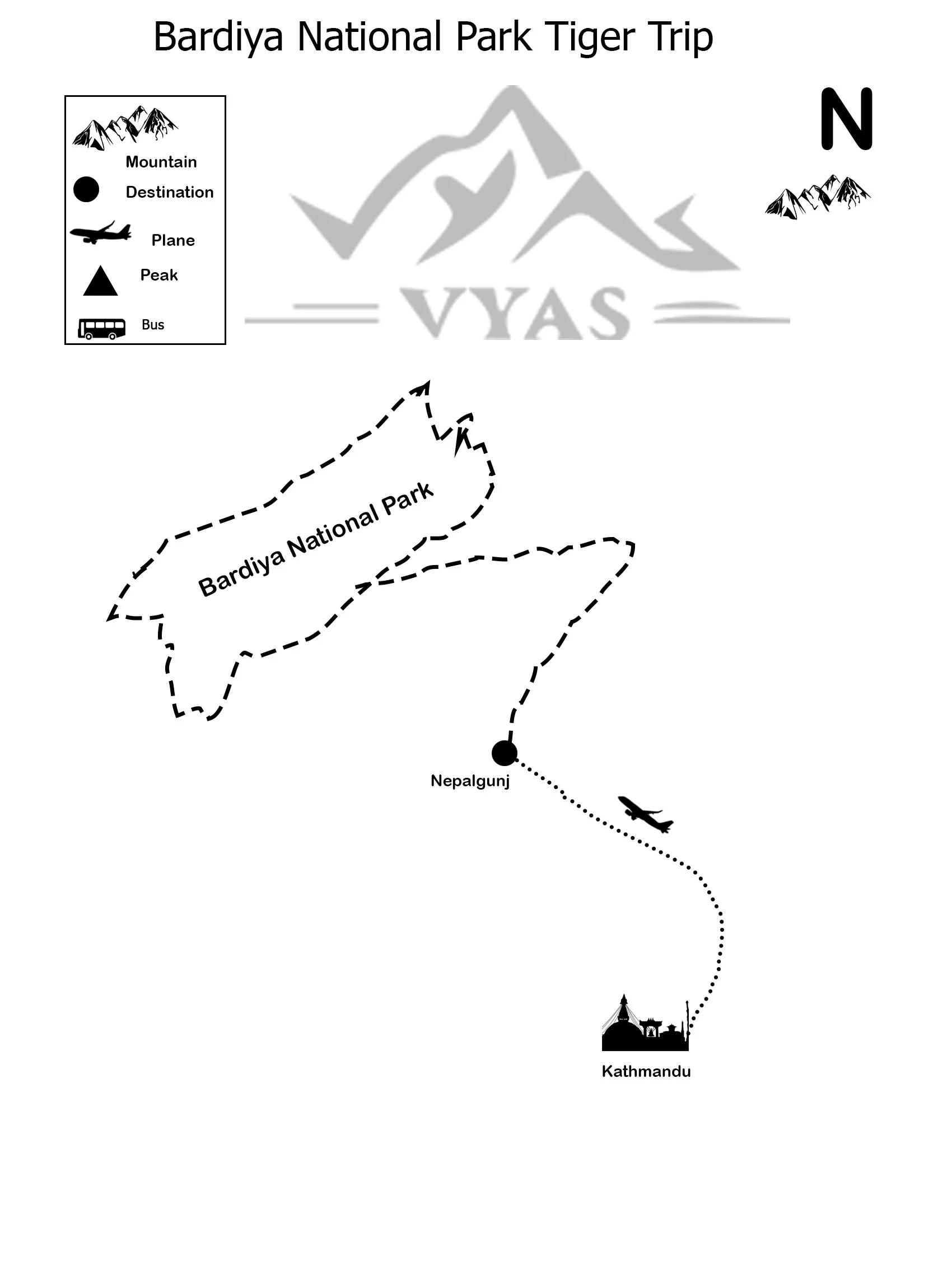


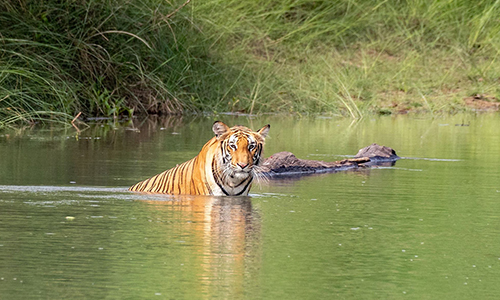

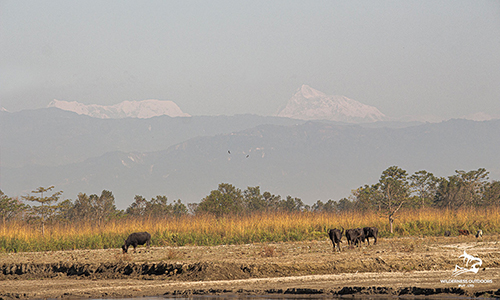
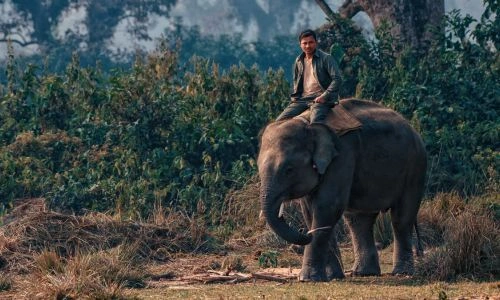

Sophia Clarke
2025-06-16 12:17:34
The Bardiya National Park Tiger Trip with Vyas Treks Nepal was an unforgettable wildlife adventure! We were lucky to spot a few elusive tigers along with rhinos, deer, and many bird species. The guides were experts in the local wildlife and made the safari both educational and thrilling. The jeep rides through the park were comfortable, and the staff ensured we had a safe and exciting experience. Highly recommend for nature lovers!